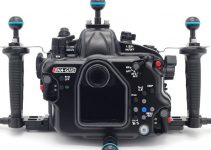If you ever wondered whether a 3-axis gimbal like the DJI Ronin can be on par with a conventional Steadicam system delivering the same results in terms of performance and stability for a fraction of the cost then the video ahead might give you some answers.
Videographer Bart Johnson and professional Steadicam operator David Aronson ran some tests between the Steadicam and the DJI Ronin gimbal to find out whether a 3-axis motorized stabilizer can indeed accomplish the same camera moves like the Steadicam on multiple occasions such as following a subject, going down stairs, turning corners and more.
Despite the similar results those two units were able to deliver, Bart and David concluded that both systems need a lot of practice and work in advance before one can be able to master either of these. In the end of the day, we are talking about two totally different systems that come with their pros and cons, certain specifications and learning curve. For instance, the DJI Ronin is entirely motorized, while the Steadicam’s performance is predominantly based on physics.
These both require some practice to get their performance to a higher level, however if one needs to spend a couple of months to get used to the DJI Ronin, the Steadicam system might take even years to master. For the more specific movements, the Steadicam operator is the main person responsible for performing the right movements by utilizing his skill set and his bare hands to control the unit, whereas the DJI Ronin relies entirely on precise computer programming and optimization to perform all those tasks seamlessly and flawlessly. All in all, the Steadicam dominated most of the tests delivering more organic and natural fluid feel to the shots.
Working with a lighter unit such as a mirrorless camera or a DSLR definitely would be a challenge for a conventional professional Steadicam system that is designed to accommodate heavier and bulkier cinema cameras, whereas the DJI Ronin is definitely more flexible in those terms. Yet, both systems need extra time when it comes to balancing a certain camera system.
Furthermore, the weight of both stabilizers is another issue to be considered. Even though, the weight of the Steadicam is distributed long the whole operator’s body it’s still a challenge to walk around with this system for extensive periods of time.
The DJI Ronin, on the other hand, is a lot lighter, but the pressure goes entirely on operators’ hands and shoulders making the system impractical for extensive use, especially when you don’t have some additional rigs that might take that weight off in a way. In this particular case, both systems need around 20 minutes to balance the same camera before they were fine tuned, up and running and ready for the shootout.
Overall, each one of those tools would serve well in different environments and shot types. Ultimately, if you are looking for a robust professional solution and the price is not an issue then renting a Steadicam along with hiring a professional operator probably would be the better choice. The DJI Ronin, on the other hand, works great for straight walking shots where fast pans or tilts are not needed and it’s definitely more affordable, flexible and straightforward to work with.
[source: Bart Johnson Productions]
B&H Order Links:
DJI Ronin-M 3-Axis Handheld Gimbal Stabilizer
DJI Ronin 3-Axis Brushless Gimbal Stabilizer
Steadicam Pilot-VL Camera Stabilization System
Steadicam Pilot-VLB Camera Stabilization System with Power
Disclaimer: As an Amazon Associate partner and participant in B&H and Adorama Affiliate programmes, we earn a small comission from each purchase made through the affiliate links listed above at no additional cost to you.



I was surprised at how well the Ronin did against the Steadicam. In the speed walking test the Steadicam was definitely smoother, but the Ronin did as well as the Steadicam in most, if not all, of the other tests. That says a lot about the operator, as he was able to reduce the z-axis bounce.
i think having a heavy camera in the ronin definitely helped with the vertical axis. it’s how the osmo could have so much bounce, because it’s too light
ronin on a steadicam ftw!
A couple of things that might have pushed things more in favor of a gimbal system…
1- Use a Stedi-cam vest with the gimbal. A few of the newer gimbals are developing ways of mounting the gimbal on a Stedi-cam type vest which takes all the weight off your arms and smooths out your walking motion.
2- Use a newer gimbal with encoded motors that vastly speed up the balancing time to less than 5 minutes. ( they also increase battery life to 10+ hours for a single battery )
Overall it’s an interesting test. Thanks for posting it.
I would love to see a test between the Ronin and the Letus35 Helix Jr. gimbal, which looks to be a better fit for larger cine cameras. ( then have both gimbals try and work with a Canon 5D or Nikon D810 camera )
Thanks so much for the writeup on my video! I hope it is helpful to everyone out there!
Sure it is, Bart! 🙂 Congrats for the great work you guys did!